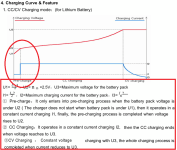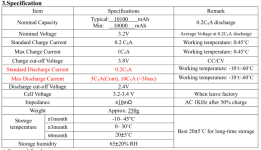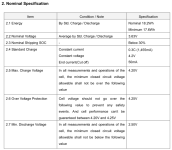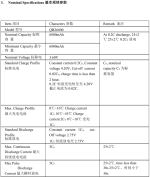flippy said:
john61ct said:
The sealed Meanwells would be great
if you either like flippy don't care about overcharging (not voltage necessarily, just for too long)
or are OK with a CC-only profile and know how to create an HVC circuit to enable automated charge termination
Oh, and figure out the issues around hooking them up in series to get to your desired target voltage.
So maybe not so straightforward. . .
again for clarity:
YOU CANT OVERCHARGE BY FLOATING THE CHARGER AT THE SET VOLTAGE.
(unless you set the voltage too high, but that applies to everything)
if you dont know how charging work stop commenting or ask for clarification but stop spreading disinformation.
And again, yes you can, you are wrong and should stop spreading misinformation.
The key word is "overcharge".
Is not defined as "can cause a fire"
Is not defined as "will cause immediately detectable damage"
Is not defined as "voltage too high".
If the desired charge profile is
> Charge to 3.47V and stop, do not hold for CV stage
then holding at 3.47V for any length of time, is overcharging,
If the desired profile is
> Charge to 3.43, then hold CV until current tapers to 0.01C
Then allowing CV to continue until current has tapered to 0.005C
is by definition overcharging.
It is harmful to cycling longevity to keep applying voltage to the point that there is no current flowing.
"harmful to cycling longevity" is what I call damage, even if you won't see evidence for decades
Lithium batteries should not be "floated" even at a voltage lower than their resting Full voltage.
And yes the risk of thermal runaway is also much higher failing to terminate charge at a point long before the vendor data sheet, especially for 3.6-3.7Vnom cells, and most especially as they wear past the 70-75% SoH EoL point.
Relying on human attention and memory to terminate charging is foolish and dangerous.







